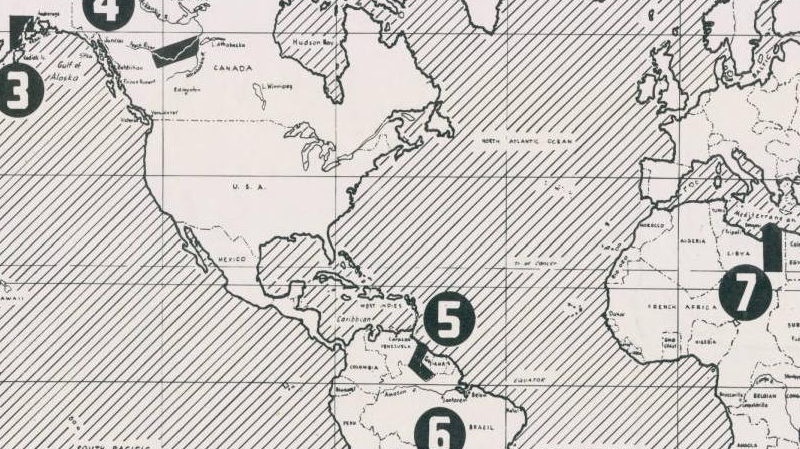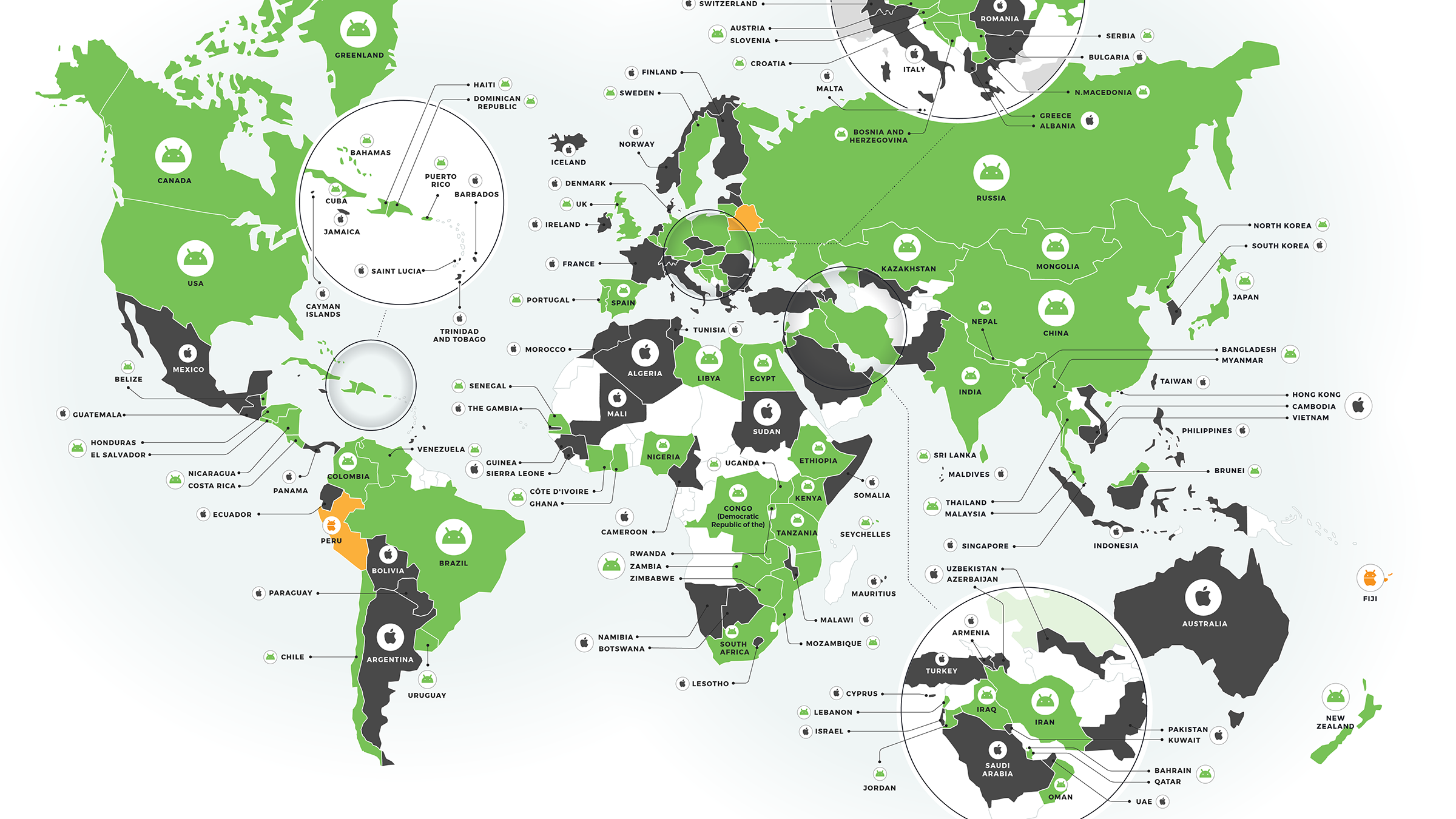Alt history: What if the U.S. lost a World War?
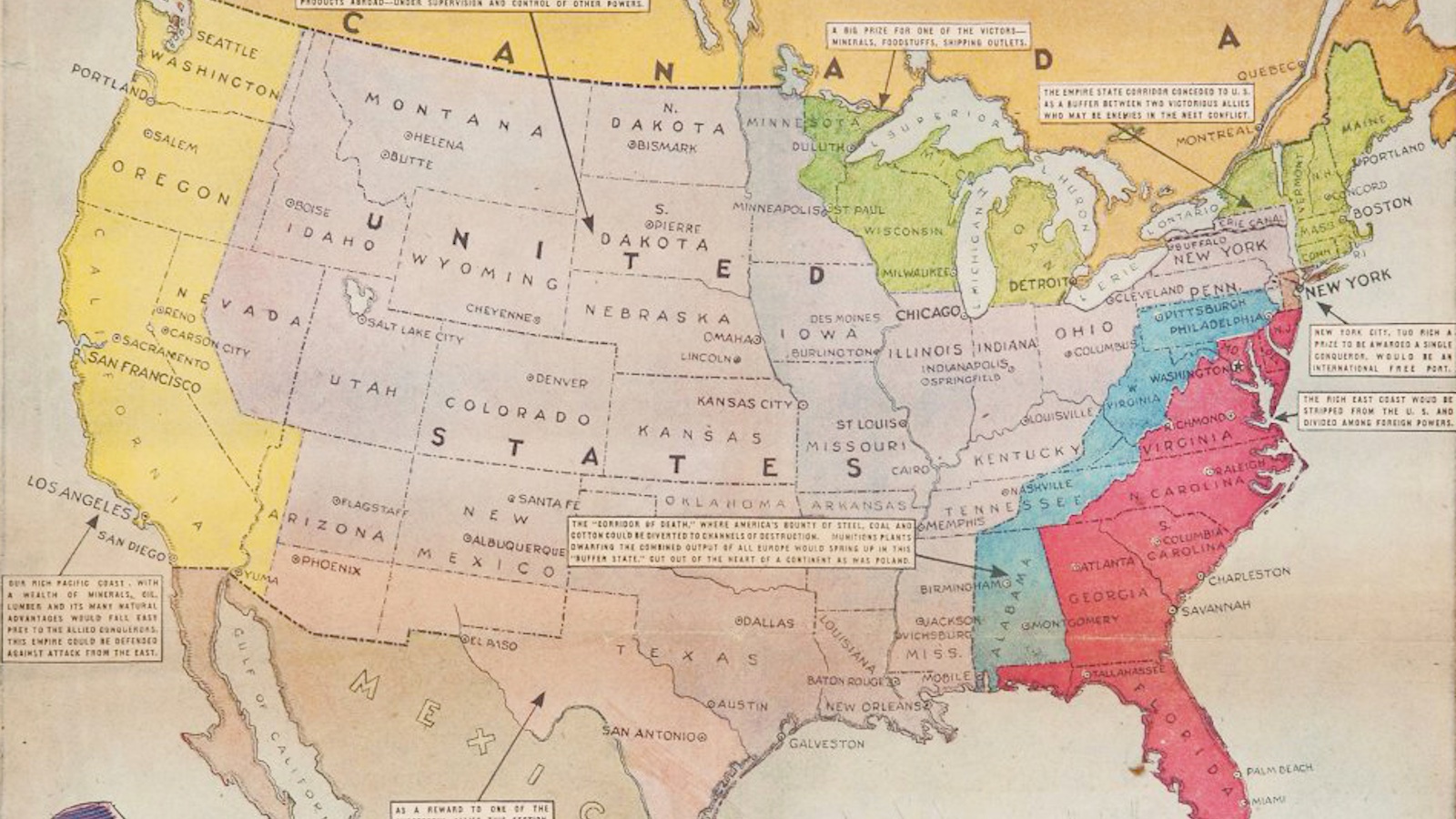
- In 1937, a large section of U.S. public opinion was opposed to America’s entry into the coming World War.
- This map was one of their more far-fetched arguments: if defeated, the U.S. would be dismembered.
- That future never happened, but the map may have inspired a classic alt-history novel by Philip K. Dick.
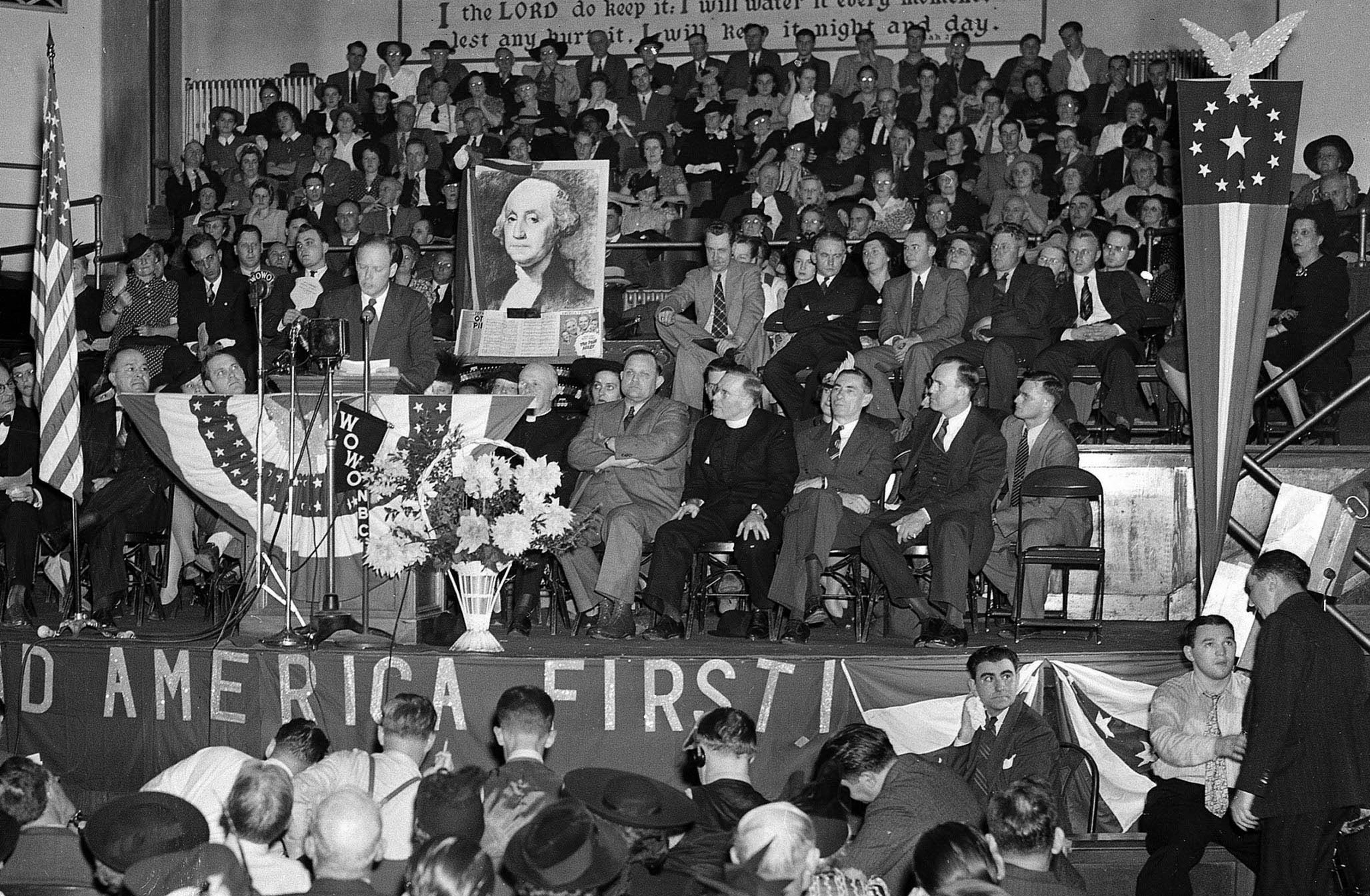
By the late 1930s, the question was no longer whether a Second World War would break out, but when — and who would be drawn into it. Whatever was going to happen in Europe or Asia, the United States should stay out: This was the opinion of a large segment of the American public, led by “America First” celebrities like Charles Lindbergh.
The United States was large and self-sufficient enough to keep minding its own business, the isolationists argued. Why spend blood and treasure on wars in faraway places that did not concern America?
Alt history: The American dismemberment plan
This remarkable cartographic artifact illustrates one of the more far-fetched reasons for staying out of the coming World War: should America end up on the losing side, that could result in the dismemberment of the United States, à la Poland in previous centuries or Austria-Hungary and Germany after the First World War.
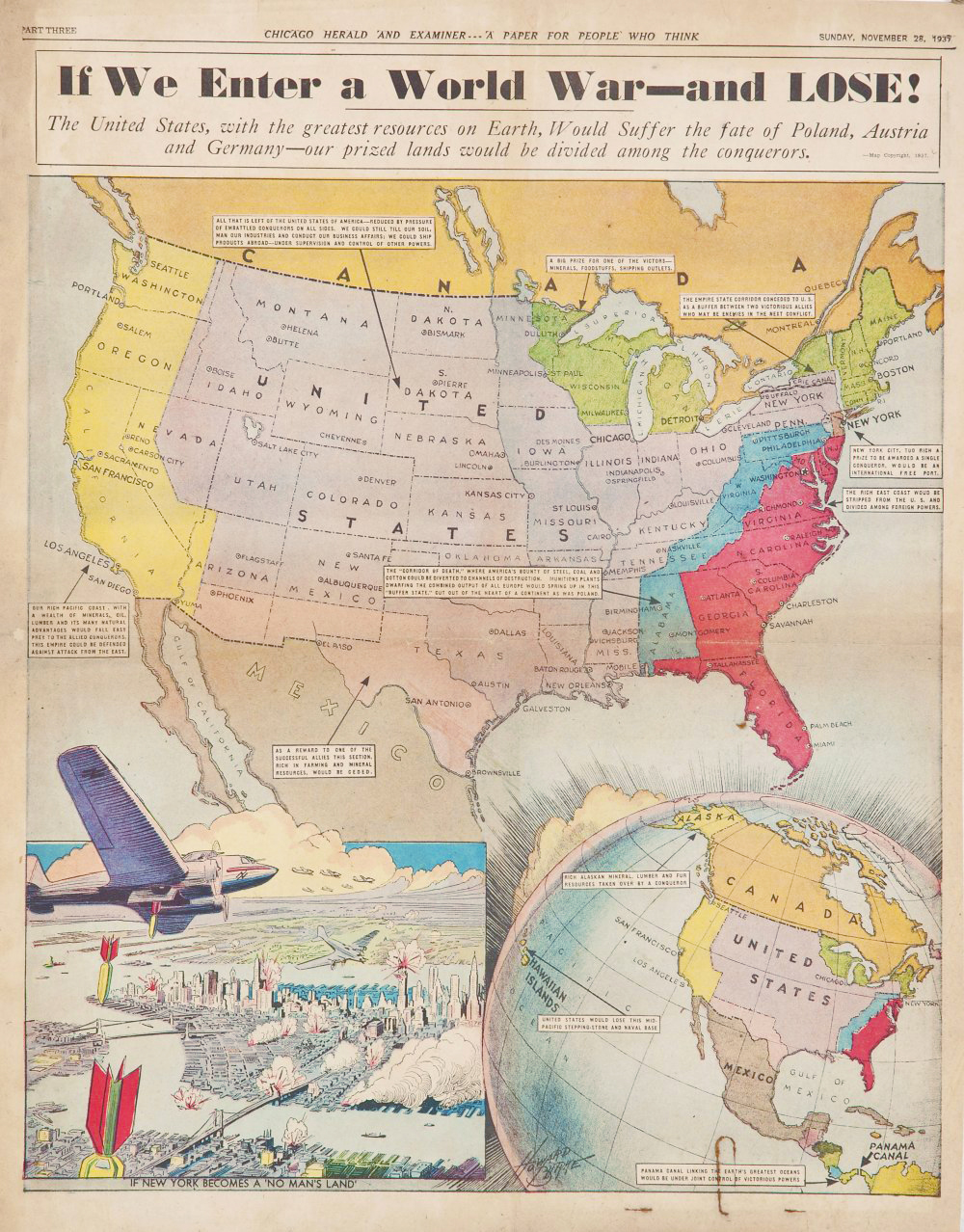
The headline above this map from 1937 screams: If we Enter a World War — and LOSE! The map explains which parts of U.S. territory could be gobbled up by the victors of that alternate WWII and why, but it curiously refrains from naming any of the occupying powers. Perhaps slapping on the names of the likely candidates would have caused offense.
Even so, everybody knew who the main suspects were: Nazi Germany and Imperial Japan. Their presumed victory would explain the detachment of both coasts: The unnamed Germans would take a big bite out of the Atlantic seaboard, and the unmentioned Japanese would take over the Pacific states. The caption next to California explains:
“Our rich Pacific coast, with a wealth of minerals, oil, lumber and its many natural advantages would fall easy prey to the allied conquerors. This empire could be defended against attack from the east.” [that is, the unoccupied rump of the U.S.]
Fur for conquerors’ hats
The occupied/annexed Yellow Zone would include all but the most easterly strips of Washington and Oregon, all of California, western parts of Nevada and Arizona, plus the entirety of Alaska, captioned (on the map inset on the bottom-right): “Rich Alaskan mineral, lumber and fur resources taken over by a conqueror.”
The legend next to Hawaii, also in the Yellow Zone, reads: “United States would lose this mid-Pacific stepping-stone and naval base.”
Over on the Atlantic coast, New York is boxed into a square. The caption says: “New York City, too rich a prize to be awarded a single conqueror, would be an international free port.” Of course, this is assuming there would be anything left of it. The illustration on the bottom-left shows unidentified bomber planes — the one closest by is adorned with an SS-like rune — dropping their payloads over Manhattan, turning the city into a “no man’s land”.
The coastal states south of NYC form a Red Zone, comprised of the southern half of New Jersey, Delaware, eastern Maryland, Washington DC, most of Virginia, the Carolinas, Georgia, and Florida. It “would be stripped from the U.S. and divided among foreign conquerors.” So, Germany and perhaps its main European ally, Mussolini’s Italy?
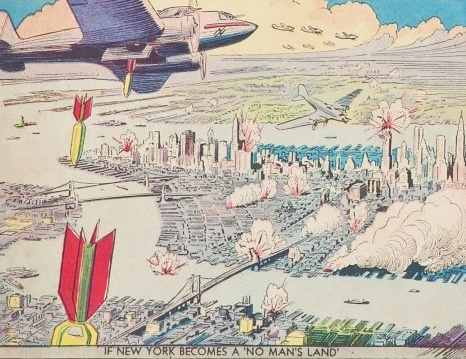
Just to the west of the Red Zone, a Blue Zone consisting of Alabama, eastern Tennessee, western Virginia, eastern Kentucky, West Virginia, western Maryland, and southern Pennsylvania would become a “corridor of death,” where “America’s bounty of steel, coal and cotton could be diverted to channels of destruction. Munitions plants dwarfing the combined output of all Europe would spring up in this ‘buffer state,’ cut out of the heart of a continent as was Poland.”
Southern parts of Arizona, New Mexico, and Texas (in pink), “as a reward to one of the successful allies (…), rich in farming and mineral resources, would be ceded.” But again, to whom? For reasons of territorial contiguity, annexation by Mexico makes sense. But the implication that America’s southern neighbor would enter the war on the Axis side remains unstated.
The Erie Canal stays American
That leaves a Green Zone in the north, in two parts, as the final giveaway. First, the zone around the Great Lakes, including Wisconsin, Michigan, and part of Minnesota: “a big prize for one of the victors — minerals, foodstuffs, shipping outlets.”
Then, there is a section of the New England states of Maine, Vermont, New Hampshire, Massachusetts, Connecticut, and Rhode Island, plus the northern part of New York state — but not the middle part and the Erie Canal that slices through it, which remain under U.S. control: “The Empire State corridor conceded to U.S. as a buffer between two victorious allies who may be enemies in the next conflict.”
What remains is “inland” America, with only a short stretch of Gulf coast as its own outlet to the world seas. Or as the map says: “All that is left of the United States of America — reduced by pressure of embattled conquerors on all sides. We could still till our soil, man our industries and conduct our business affairs. We could still ship products abroad — under supervision and control of other powers.”
The Boy in the High Castle
This map appeared on Sunday, November 28, 1937, on the front page of a supplement to the Chicago Herald and Examiner (“a paper for people who think”). It was also published in many other newspapers of the Hearst media empire. Although the map describes a future that never happened, maybe it did have an impact on the things to come — if only on the future of dystopian alt-history fiction.
Could this map have planted a seed in the mind of Philip K. Dick, then still a young boy? In 1962, the sci-fi writer published The Man in the High Castle, a novel about an America defeated in World War II and partly occupied by the victorious Japanese and Germans. Now considered one of the classics of the alt-history genre, Dick’s book doesn’t include any maps, leaving the reader to fill in the story’s many geopolitical blanks. But the TV series that followed did include some speculative cartography in its opening credits, focused on the Pacific States of America, a Japanese puppet state that bears more than a passing resemblance to the Yellow Zone on this map. (See also Strange Maps #700).
Strange Maps #1123
Got a strange map? Let me know at [email protected].
Follow Strange Maps on Twitter and Facebook.
